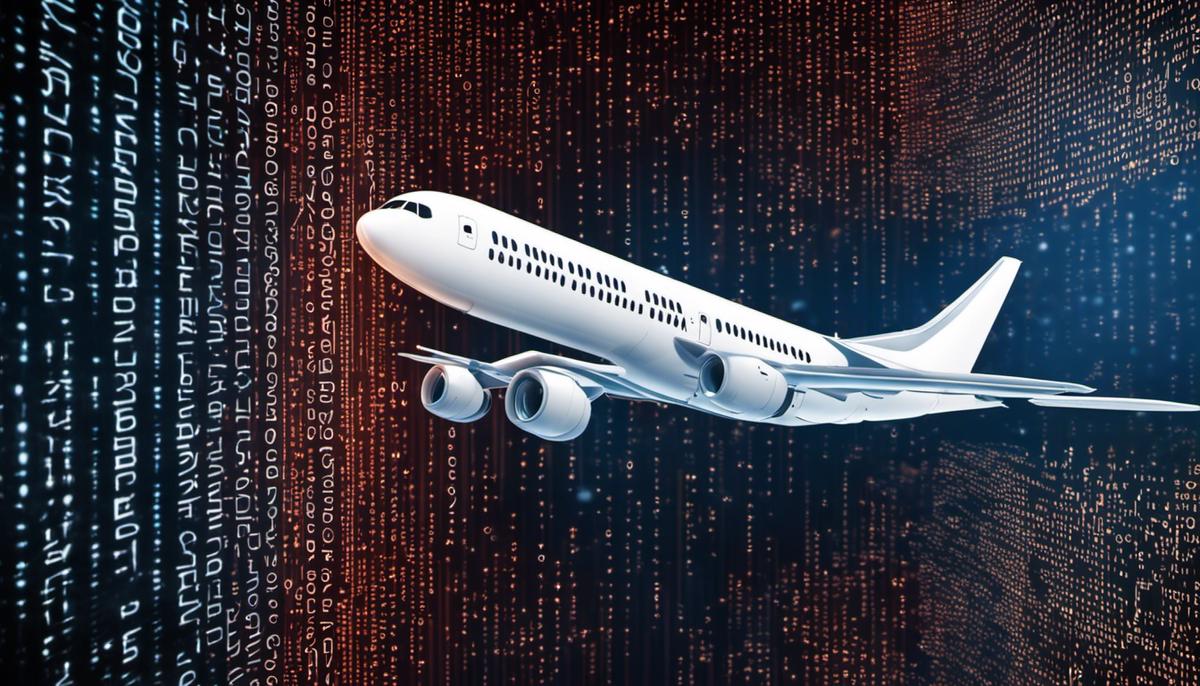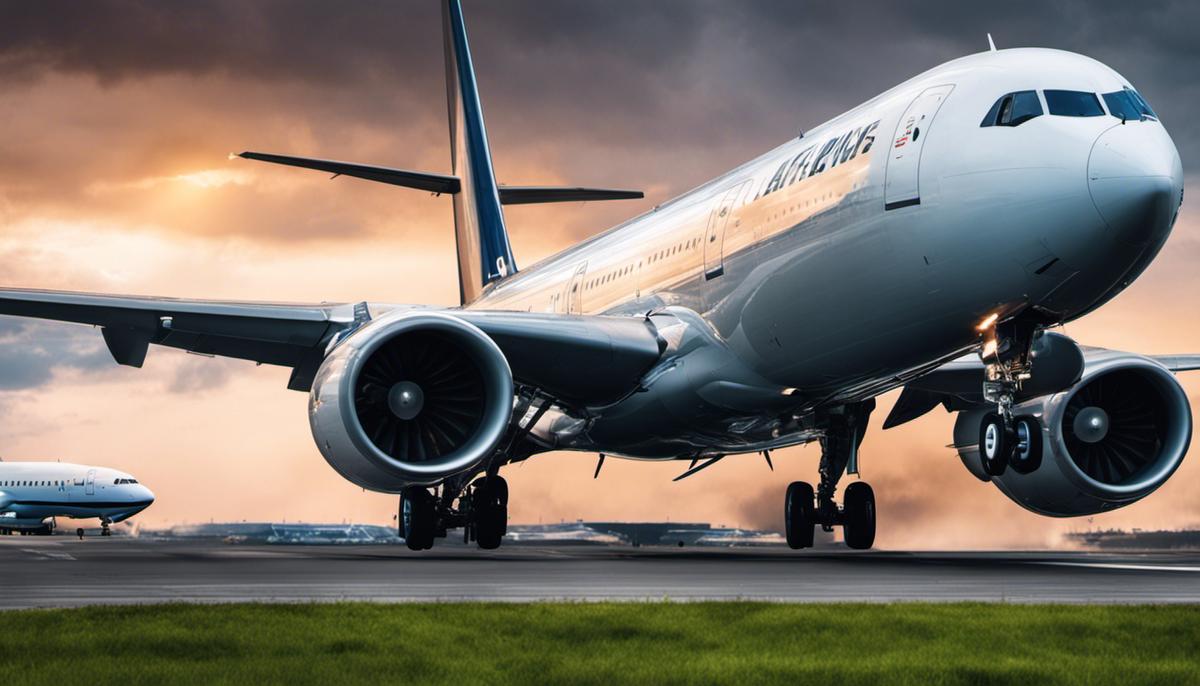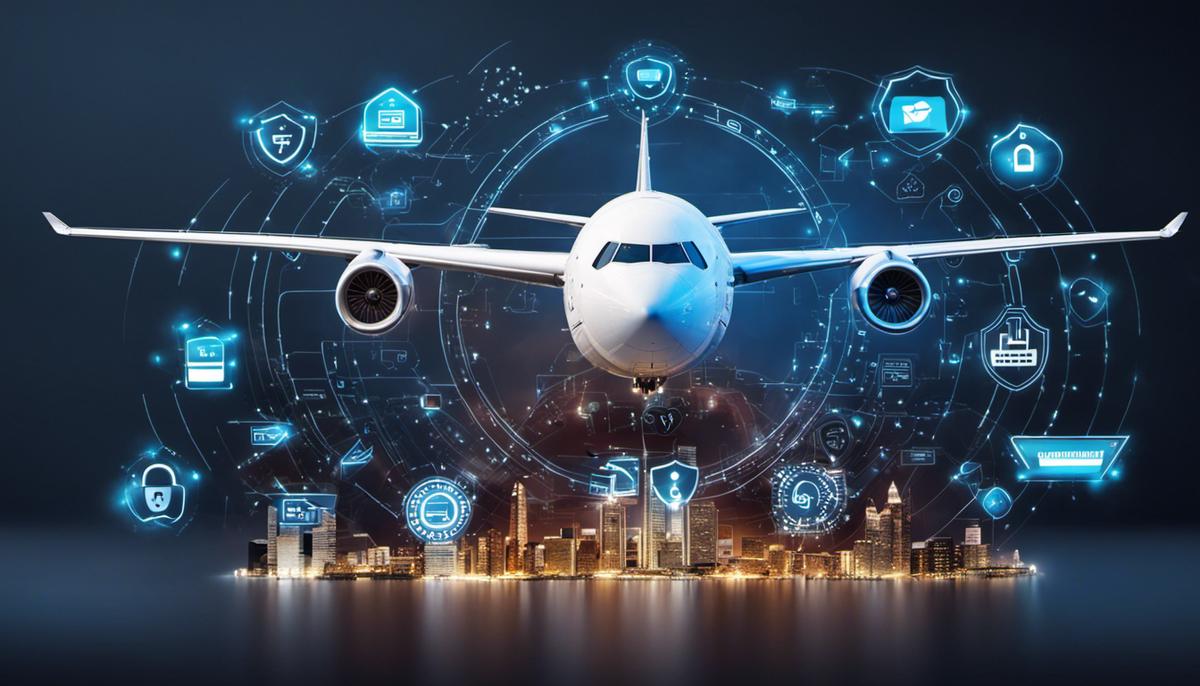The important question is not if airline cyber attacks occur but how they occur and their implications on passenger safety, aviation business, and the industry at large. The consequent need for robust cybersecurity strategies and constant vigilance is undeniable. This investigation will delve into understanding, examining, and analyzing the intricacies of airline cyber attacks, their impact, and the countermeasures to mitigate their effects.
Understanding Airline Cyber Attacks
Title: The Intricacies of Airline Cyber Attacks and Their Growing Importance
There’s a booming onslaught of technological trends shaping our world, and one of the most vital for discussion is cybersecurity, specifically, the rising threat of cyber attacks on our airline industry. This issue isn’t merely about technical glitches or operational hiccups; it’s a phenomenon marked by malicious intent and has broad, significant implications for the entire global community.
An airline cyber attack refers to any action that seeks to exploit weaknesses in airlines’ systems and applications to disrupt operations, steal sensitive data, alter databases, or deploy ransom software. These attacks cut through a broad spectrum, from the airlines’ reservation systems and mobile applications to data-rich flight control systems.
Understanding why airline cyber attacks matter requires an exploratory look at their vast impact. At its core, such an attack threatens privacy and security. Airline databases contain a goldmine of personal customer data, including financial information and travel histories. Breaches of such databases can lead to identity theft, financial fraud, and exploitation of personal data on a large scale.
Moving over to the operational aspect, airlines extensively depend on advanced computer systems for almost all their tasks, from scheduling flights and controlling air traffic to in-flight navigation systems. Consequently, these attacks can potentially destabilize air travel, causing substantial disturbance in flight schedules, passenger safety, and overall air traffic management.
Another critical perspective to consider is financial ramifications. According to a study from IBM Security and the Ponemon Institute, the average total cost of a data breach is USD 3.86 million. For an industry that’s been hard hit by COVID-19 setbacks, absorbing these costs can prove excessively burdensome.
Airlines are also integrating emerging technologies such as AI, Machine Learning, and IoT into their operational processes. While they offer significant benefits like enhanced efficiency and improved customer service, they also increase the attack surface, making the airlines more susceptible to cyber threats.
Additionally, cross-border collaboration is a defining characteristic of the global aviation industry, meaning a successful airline cyber attack could potentially have geopolitical consequences. This international dimension makes the issue not just an operational concern for airlines but a national security issue as well.
Importantly, recognize the shift in momentum towards cyber defense; airlines are ramping up their security strategies to stay ahead of these threats. Implementing stringent software patching processes, comprehensive staff training initiatives, robust incident response plans, and collaboration with governments and cyber defense organizations are all crucial steps currently being taken.
Yet, the battle against airline cyber attacks is an evolving one, with progress relying on the development of technological innovation and strong security culture. A relentless focus on these areas will not only mitigate the risks posed by these attacks but also play a fundamental role in shaping the future of a safe, secure, and efficient global airline industry.

The Anatomy of Airline Cyber Attacks
Right off the bat, it’s essential to grasp how airline cyber attacks might unfold. Realistically, cyber foes simulate two primary attack vectors.
The first implies direct breaching of the airline’s IT infrastructure through various methods like ransomware, phishing, social engineering, and distributed denial-of-service (DDoS) attacks. Cybercriminals can exploit technical vulnerabilities and human errors to drive these attacks and reach the airline’s valuable data reserves. Interestingly, some of the high-profile attacks have transpired by exploiting outdated or unpatched software, poor access control policies, and malicious insiders.
The second vector revolves around third-party systems associated with airlines. Think about it – airlines rely heavily on various external systems and partners, such as ticket booking platforms, baggage handling, or in-flight entertainment providers. Cyber adversaries perceive these as softer targets, given the operational complexity and potential security gaps. They target these third-party systems to compromise the airline’s security indirectly.
Furthermore, it’s worth highlighting aircraft themselves are becoming targets due to the evolving use of onboard technologies. Broadening wireless connections, the growing use of cloud solutions, and the Internet of things (IoT) integration turn modern aircraft into potential attack vectors. Aircraft, once primarily mechanical creatures, have morphed into complex connected systems, providing another avenue for cyber extortionists.
From the perspective of threat agents, they fall into two primary categories: state-sponsored and criminally-motivated. State-sponsored hackers often target airlines as part of geopolitical schemes, aiming to access sensitive governmental or corporate data or even destabilize the infrastructure. On the other hand, criminal hackers get motivated by financial gain. They might sell passenger data on the dark web, demand ransom in DDoS attacks, or gain from identity theft.
To counteract such a convoluted threat landscape, airlines need proactive and dynamic cybersecurity strategies. Advanced threat intelligence and machine learning algorithms play a prime role in identifying and neutralizing threats before they breach the security perimeter. Airlines are also investing in cybersecurity training for their staff, making them an integral part of the defensive structure.
Evolving digital technologies like blockchain, secure access services edge (SASE), and zero-trust architecture offer promise in further bolstering airline cybersecurity. Similarly, enforced regulatory compliances, like the General Data Protection Regulation (GDPR) within Europe, have made airlines more accountable for protecting passenger data.
In sum, implementing comprehensive cybersecurity practices is no longer optional – it’s a mandatory, continuous journey for airlines in their pursuit of navigational safety. By understanding the methods and motivations behind cyber attacks, the industry can work towards proactive resilience, securing the technological future of air travel.

Case Studies of Notable Airline Cyber Attacks
Let’s delve into some appalling airline cyber attacks that turned the spotlight on cybersecurity. The objective isn’t fear but understanding, for knowledge enables power over threat.
The notorious Sabre Systems Breach in 2017 was a wake-up call. Sabre, a travel tech giant whose systems are interwoven with airlines, hotels, and travel agencies, was hacked, potentially revealing millions of records. It’s a stark reminder of how third-party integration can open doorways to threat vectors, underlining the need for rigorous security audits of all associated systems and partners.
The Cathay Pacific Data Breach of 2018 was another eye-opener where 9.4 million passengers’ personal data were exposed. While technical control failures were one issue, the slow response highlighted the need for a robust incident response plan that caters to rapid identification, containment, and communication.
Another sobering incident was the data breach at British Airways in 2018, resulting in a hefty GDPR fine of £183m. Exposed were around 500,000 customer data. It showed how exploiting vulnerabilities, even in a website script in this case, could enable malicious attacks. For hackers, everything is fair game, underscoring the need for a pervasive defense.
Now, taking lessons from these cyber onslaughts, it’s evident that tackling the cyber threat landscape requires a multi-pronged approach.
First, proactive cybersecurity. This is not just about building walls but ensuring they’re always fortified. Be it outdated software, poor password policies, or the evolving method of a DDoS attack, constant vigilance is key. Employing sophisticated threat intelligence that alerts on anomalies aids in staying one step ahead.
Next, leveraging AI and Machine Learning is vital. These technologies are excellent at predictive analysis and anomaly detection and can provide real-time alerts in case of a breach, helping nip threats in the bud.
Airline staff represent another vulnerability – human error. Regular and robust cybersecurity training to spot phishing attempts or suspicious activity can indeed pay rich dividends.
The adoption of advanced security technologies is gaining traction. The decentralized architecture of blockchain, the dynamism of Secure Access Service Edge (SASE), and the assumption of a breach in Zero Trust Architecture are future-facing solutions. Marrying these with existing systems requires painstaking calibration but promises greater security and reliability.
Also, the detailing of mandatory regulations such as the EU’s GDPR plays a crucial role in defining the guarding parameters of cybersecurity, especially safeguarding consumer data. The British Airways penalty stands as a testament to the teeth regulations now possess.
In conclusion, the realm of airline cybersecurity isn’t just about anticipating attacks but preparing for them, and even surviving them. A cyber-resilient approach that marries technology and human awareness evolves and learns constantly from every attack and every breach is what will give airlines the edge over cyber criminals. In the face of AI-driven threats, the equally technologized response is both the shield and the weapon. The technological future of air travel hinges on this synergy. And it’s only in respecting this intricate interconnectedness that airlines hope to ensure safe passages, not just in the air, but in the cyber realm too.

Preventive Measures and Future Trends
In addition to these measures, airlines must also consider protection from insider threats. They should have a system in place to monitor for suspicious activity from employees, suppliers, and partners. Constant vigilance within internal networks can help identify and neutralize threats before any damage is done.
Next, airlines should strengthen defenses against Distributed Denial-of-Service (DDoS) attacks. As a key vector of cyber assault, airlines need robust tools that can detect and mitigate DDoS attacks. Introducing more efficient load balancers and ensuring geographically dispersed systems can help distribute traffic and mitigate risks.
Furthermore, airlines should harness the potential of advanced encryption methods to secure passenger data at rest and in transit. Emphasizing end-to-end encryption and solutions like Domain Name Service Security Extensions (DNSSEC) can provide robust protection by making data unreadable by unauthorized parties.
The adoption of a Security-as-a-Service (SECaaS) model can also provide streamlined, scalable, and flexible cybersecurity solutions. Rather than focusing on assembling individual components, airlines can rely on a provider with a holistic perspective on cybersecurity.
The advent of 5G networks presents an opportunity and a challenge for airline cybersecurity. While it enables faster data exchange and new technologies like IoT, it also expands the attack surface for hackers. Airlines should brace for the 5G wave by revamping cybersecurity strategies.
Next on the list would be cyber risk insurance. No matter how robust an airline’s cybersecurity efforts are, there can always be unforeseen or overlooked vulnerabilities. Investing in cyber risk insurance can help soften the financial blow if a breach or an attack does occur.
Cybersecurity is a battle that’s won both with technological innovation and human awareness. Thus, regular cybersecurity awareness training for all employees across all levels is vital in mitigating risks. Also, encouraging a culture that values security can help an organization’s personnel become its best defense.
Last but not least, airlines should foster a spirit of competitiveness in cybersecurity. Airline industry players can mutually benefit from a shared approach to tackling cybersecurity, helping to improve the overall standards and reducing the chances of cyber attacks sector-wide.
In sum, protecting airlines from future cyber attacks will require an approach that is holistic, agile and forward-thinking. As airlines delve deeper into the digital realm, with more tech-reliant operations, the importance of cybersecurity will only continue to climb.

As cyber threats become ever more sophisticated, it’s not enough for airline industries to merely respond. Proactive measures are increasingly integral to bolster cybersecurity. Strategies such as advanced encryption, multi-factor authentication, continuous training, and early threat detection systems are paramount. However, security is a race without a finish line. The trends and technologies in both cyber attacks and cybersecurity are on a trajectory of constant evolution. To sustain flight operations and ensure passenger safety, industry players must keep up with this wave, endlessly adapting and innovating their cybersecurity schema.

